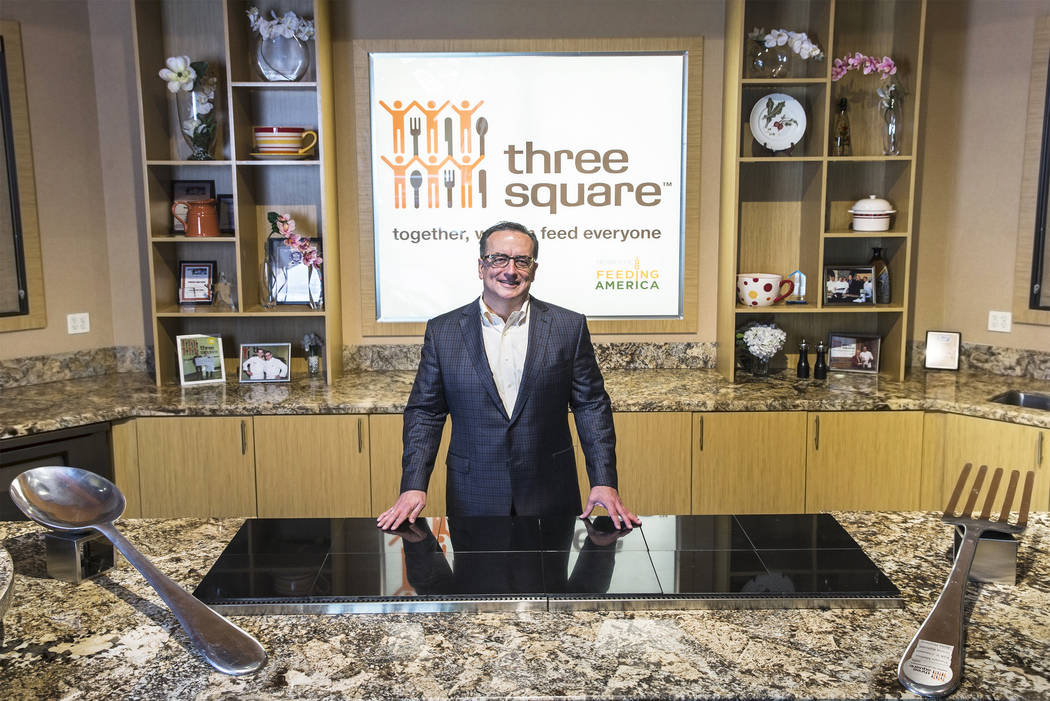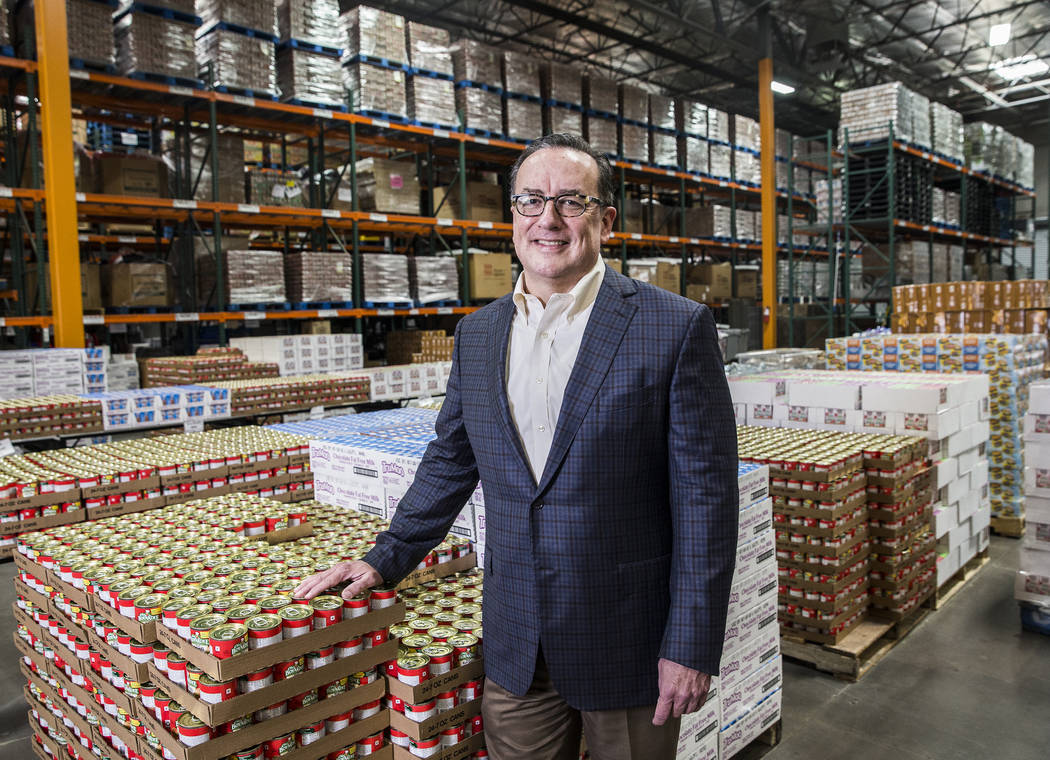Three Square CEO works to end food insecurity in Southern Nevada
Brian Burton’s path to president and CEO of Three Square food bank began before he was born. Burton’s grandmother set an early example for public service by taking her daughter and her angel-food cake to a county nursing home in Burton’s birthplace of Little Rock, Arkansas, during the Depression, and his mother followed suit.
“That was imprinted on me at an early age,” said Burton, who’s now 57. “And the disparity of living in the South during the 1960s; that made an impression on me. I didn’t understand why there was such poverty and there was such segregation. My parents were really good about teaching me about racism and how stupid it is.”
Burton went to a Baptist college and then earned an MBA at Louisiana State University. He worked as a controller in Dallas for a few years, but it didn’t feel right.
“I really felt called to humanitarian service when I was in my mid-20s,” Burton said. He went to Southern Seminary in Louisville, Kentucky, eventually earning a master of divinity.
“Of the 3,000 students, I was the only one who had an MBA,” he said with a laugh.
His plan was to work in a large church, and he returned to Dallas and the progressive Wilshire Baptist Church.
“What I found myself really loving was sending people out of the church and into service,” he said. “When you think about the life of Christ, he was always in the marketplace, walking along the seashore, helping people out in the villages.”
The church increased its outreach projects and, during one period of high unemployment, had a jobs lead network of 2,000 people, 99 percent of whom weren’t church members.
After five years at the church, Burton, too, was to go out into the community. A friend who was running a Methodist food pantry needed help. Six months later, the friend quit and Burton had a new job. He stayed 15 years. And then Jan Pruitt, head of the North Texas Food Bank, encouraged him to go to a larger organization and get into the national Feeding America network.
“She told me about this start-up food bank in Las Vegas that was looking for a CEO to follow its founder” in 2011, he said. He liked that it was a new organization, and saw how bad the economy was. Burton came out to interview and was hired that day.
When he arrived, the food bank was distributing 23 million pounds of food a year; now it’s at 44 million pounds.
“It’s been like a whirlwind,” he said. “Moving out here was the best career decision I ever made. The community embraced us very quickly.”
Review-Journal: How many food-insecure people do we have in Southern Nevada, and what does that mean?
Burton: The most current number is right around 280,000. It’s a person or a family who worries about where their next meal is coming from. There’s people who worry two or three times a year. There’s people who worry every day.
Is the situation getting any better?
During the recession, it was higher. We had one out of six people, basically, who were considered food-insecure. Now we have one out of seven. It’s still unacceptably high. We’re very concentrated in Clark County. That helps us distribute the food where it needs to go. Colleagues in Montana and Wyoming serve the entire state. We serve four counties in Southern Nevada (Nye, Esmeralda and Lincoln in addition to Clark). The vast majority live in Clark County.
Does the rate of food insecurity simply parallel the economy, or are we doing more to fight it?
Both. Clearly there are more people working now, which is good. The concern — not just here but around the country — is we lost a lot of the better-paying jobs during the Great Recession. Folks are getting jobs, but they’re not making as much money. Emergency food response is becoming chronic for a lot of our citizens.
How does Las Vegas compare with other parts of the country in terms of the community working to end hunger?
When this town decides they’re going to do something, they don’t pussyfoot around. It does take strong leadership, but it takes a community that believes in what you’re doing, that’s willing to open their pocketbooks and get on their boards and volunteer and do all the things that it takes for Three Square. We have a great governor and great leaders who have become much more responsive around this issue. We applied for a waiver for some of the time limits and work requirements for some of the SNAP (food stamp) benefits, and $57 million will come back to our state next year. We have great partners, great philanthropists.
What more can and should be done?
It’s a solvable problem; I say that every day. But we need 10,000 more volunteers. I hate to sound greedy. We do have 32,000 volunteers, which is amazing, but we need more. With more money, we can feed more people. The funds are always in limited supply. It does take an entire community to solve hunger. It really takes all of us to limit food waste. Grocery stores have been very responsive and are now harvesting 13 million pounds of food a year that would be going to the landfill. There’s opportunity to capture more of that, and we’re working diligently every day to do it.
What are some creative ways Three Square is helping to end hunger?
We have invested in what commonly is referred to as social enterprise … a for-profit revenue stream that most progressive nonprofits are working to develop, so we’re not completely dependent on donations and philanthropy. We’re providing vended meals for 20 of the state charter schools. We make a profit from that. I’m very proud of the advocacy and the public partnerships that we leverage trying to get more federal funding and state funding. That’s not something every food bank does.
Contact Heidi Knapp Rinella at Hrinell@reviewjournal.com or 702-383-0474. Follow @HKRinella on Twitter.






























